Writing essays and cooking pancakes: An indulgent, but hopefully useful metaphor
23 Aug 2022
Beginning an essay is often the most difficult part of the essay writing process. By working methodically, and breaking down the project into smaller, achievable tasks, you can develop strategies that make the blank Word document less daunting.
Let’s approach writing an essay in the same way we would approach cooking pancakes.
Step 1: Identify the basics
Before we begin, we need to know how many people we’re cooking for, and how many pancakes they will eat. Applying this metaphor to essay writing, the first thing we need to do is identify is who we are writing this essay for, and how many words we need to write.
Step 2: Find your recipe
Let’s imagine you’ve never made pancakes before. The first thing you would do is likely find a simple recipe to follow.
Using our pancake metaphor, the ‘recipe’ for our essay will be the assessment rubric. Rubrics are critically under-utilised by many students.
The same way that a list of ingredients will list the quantity of each ingredient and which ingredients to use, the rubric will tell you how many marks are awarded, and what they are awarded for.
You can use these guidelines to your advantage. If the rubric indicates that 60% of the mark is allocated to critical analysis, then you can ensure that you’re not spending most of your essay (and unnecessary time!) summarising ideas without providing analytical commentary.
Step 3: Figure out what utensils you’re going to need
Our ‘utensils’ here are going to be the resources we need to write our essay. This step can apply to any tool, time, person, place, or text you feel will support you in writing your essay. For instance:
- Good academic sources for each part of your essay, it is useful to save all your sources in a folder or to your bookmarks bar before you begin writing
- A meeting our LSA, to help you plan your assignment
- Someone to look after your kids while you come into CUC for a few hours
- Quiet time to rest after work before coming into CUC in the evening
The utensils that you require may not be the same as the person sitting across from you in the computer room. Identifying your individual needs (let alone putting them into action!) is a difficult, but important step to writing well and minimising assignment stress.
Step 4: Decide on your ‘method’
Once we’ve found our recipe, we know what our ingredients are and we know what utensils we need, we’re nearly ready to start writing.
But first, we need to know how we’re going to work and what tasks we need to achieve. A short ‘method’ or checklist, particularly one that helps you to manage your time, can be support you to stay focused. For example:
- Finish research and save files (2 hours)
- Plan essay (3 hours)
- Write intro (1 hour)
- Make sure intro is in keeping with plan, adjust if necessary (30 min)
- Para 1 (2 hours)
- Para 2 (2 hours)
- Para 3 (2 hours)
- Go back and check fluency and argument structure (1 hour)
- Write conclusion (1 hour)
- Proofread (30 min)
- Complete referencing (1 hour)
- Proofread (30 min)
- Submit 😊
A checklist like the example above helps ensure you organise your time efficiently and move through the assignment in a way that is logical for you. Everyone’s ‘method’ may be different!
Step 5: Start cooking!


0 Comments
There are currently no comments, be the first to leave one